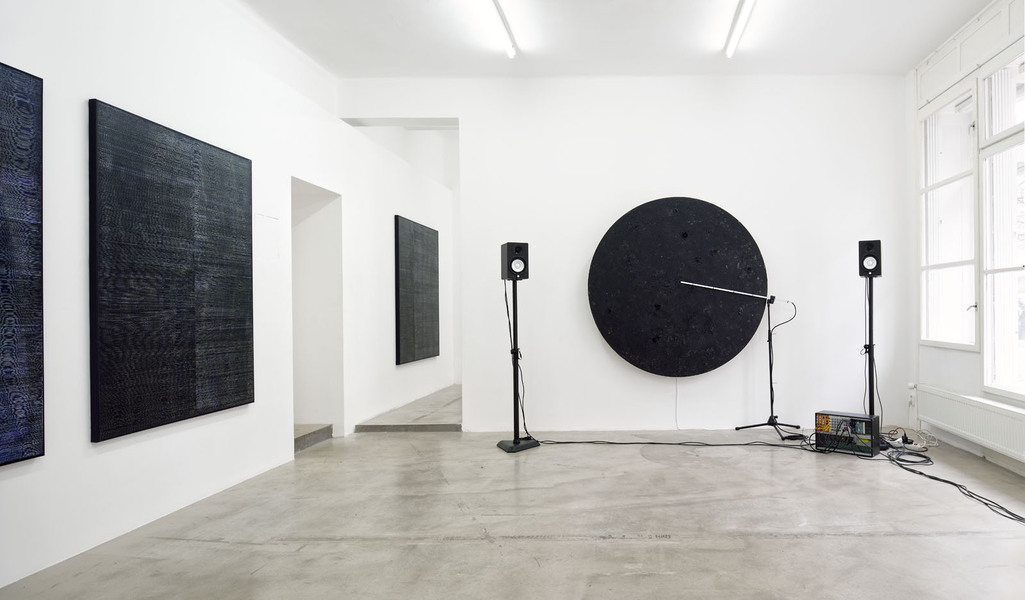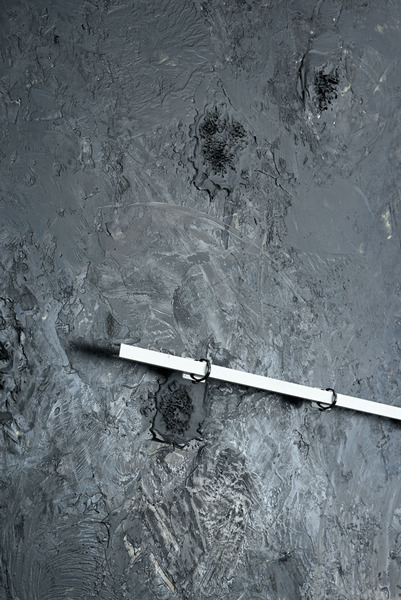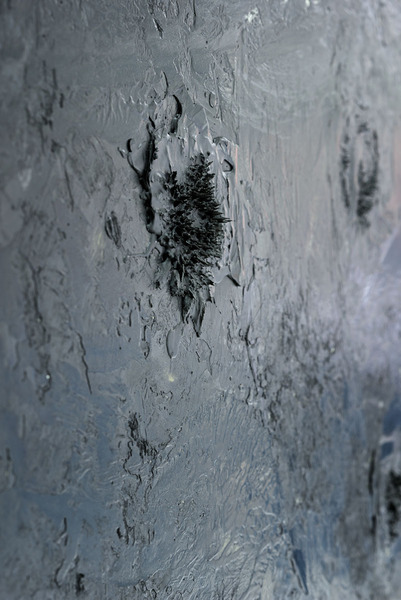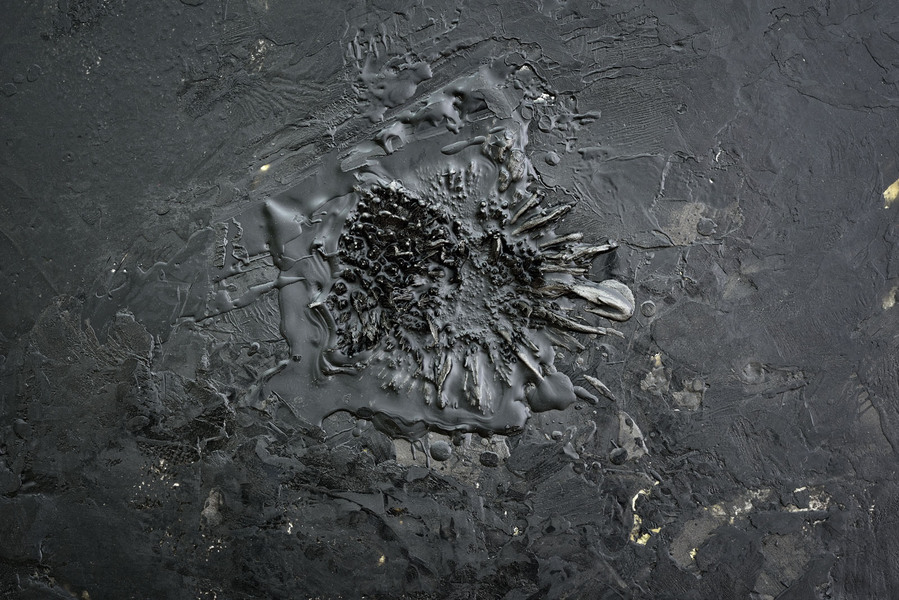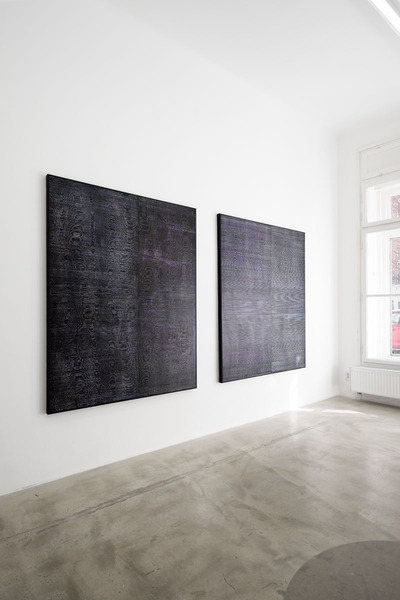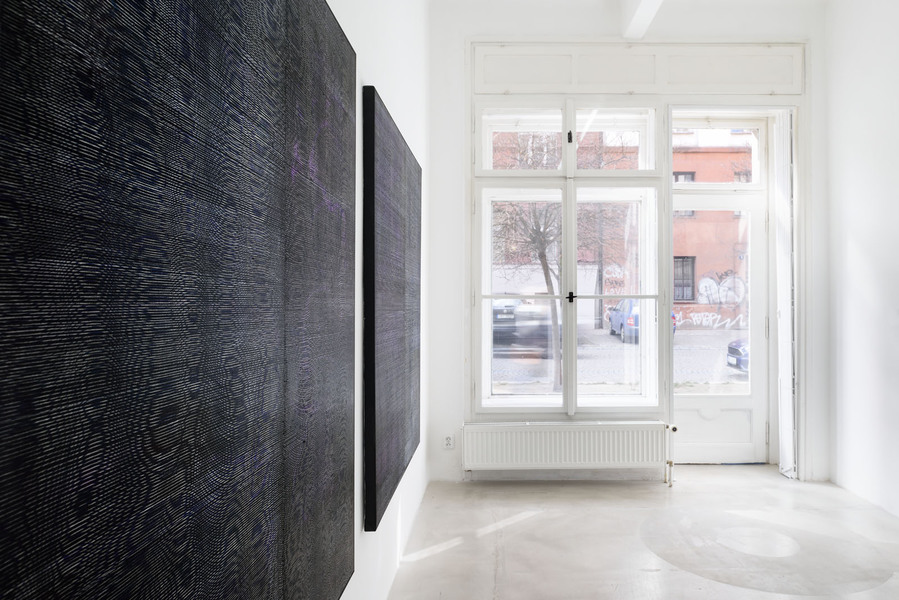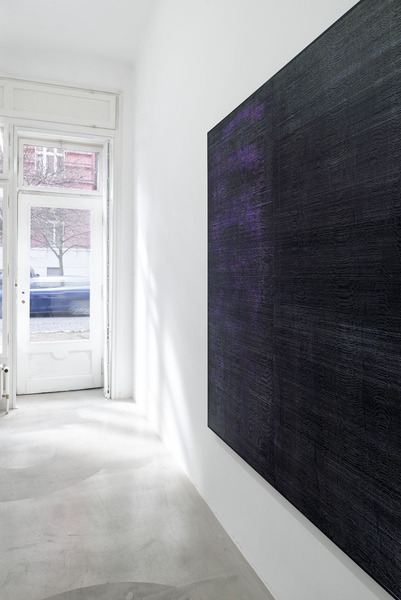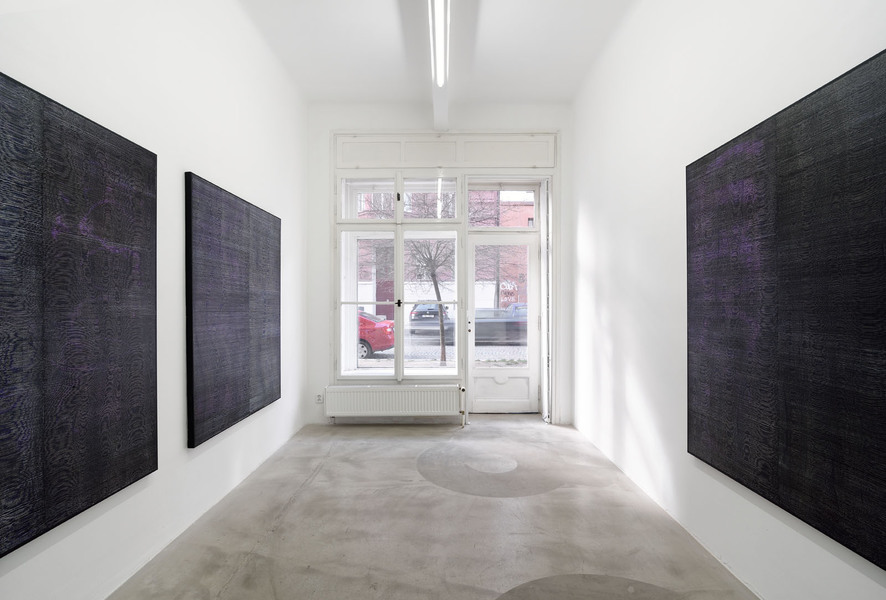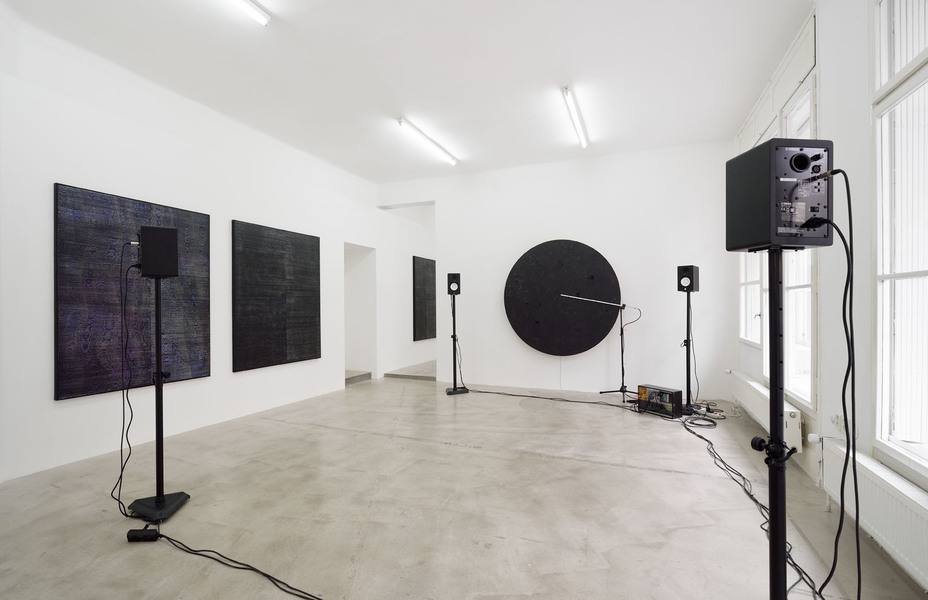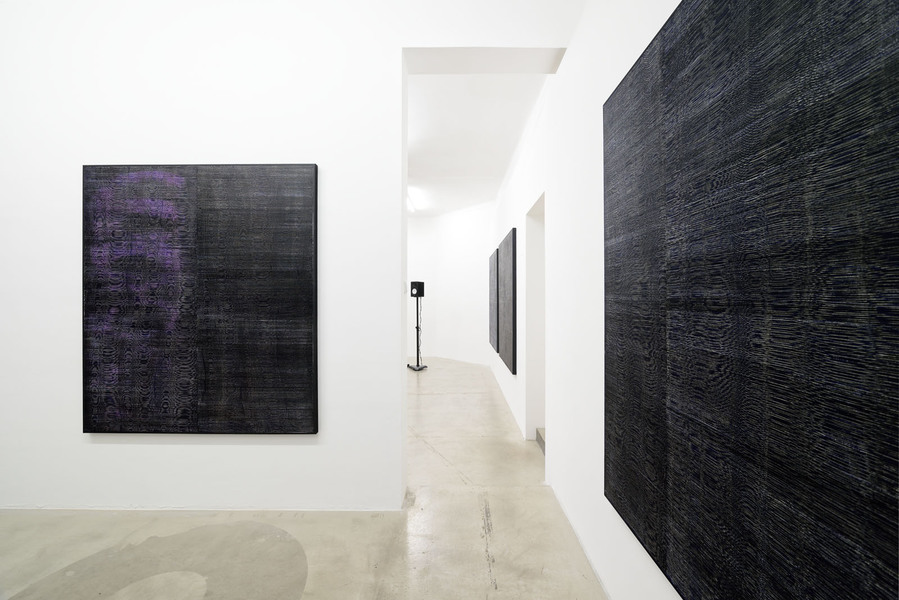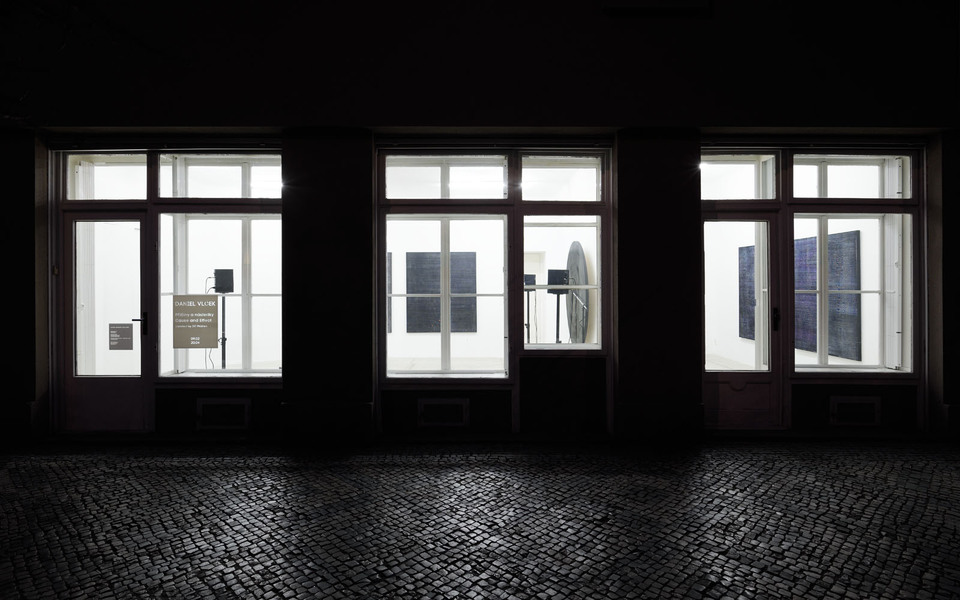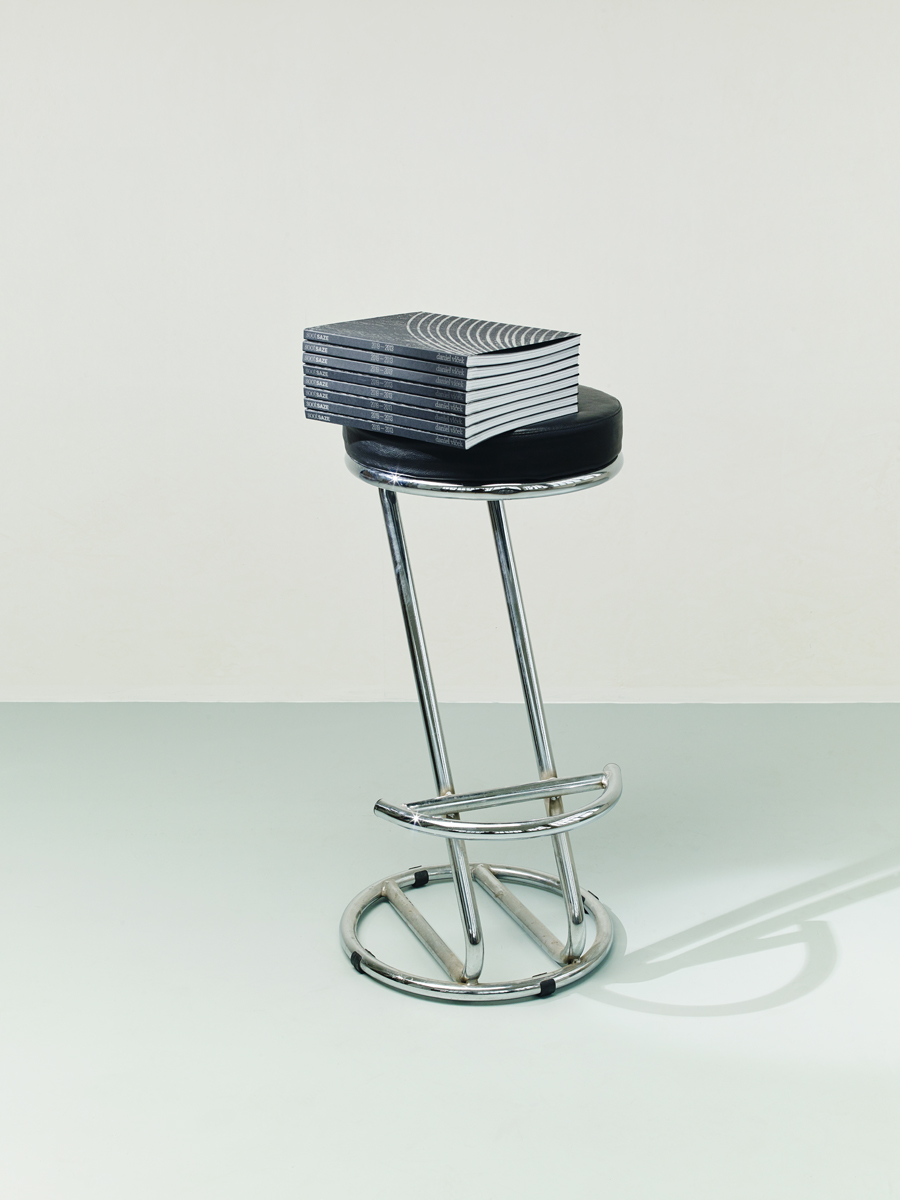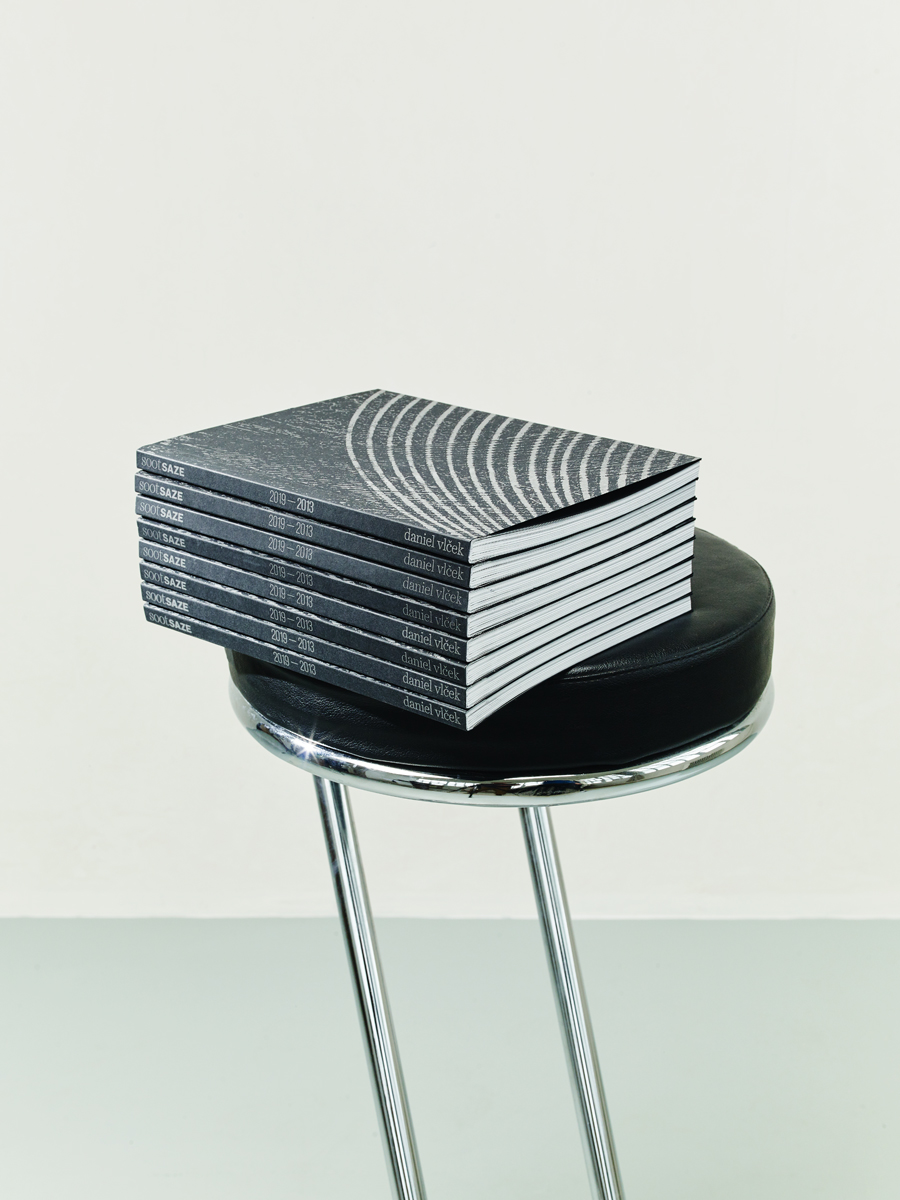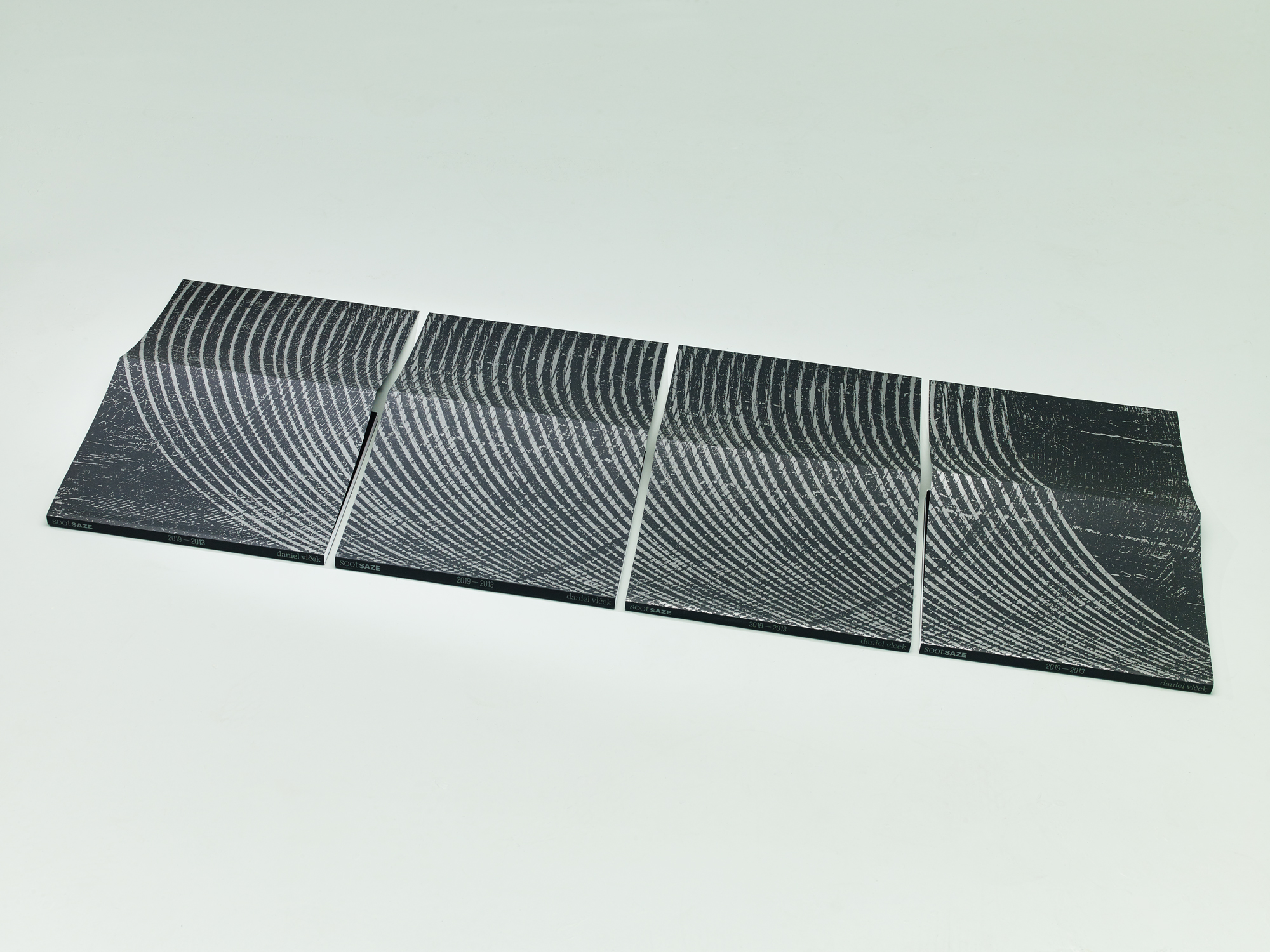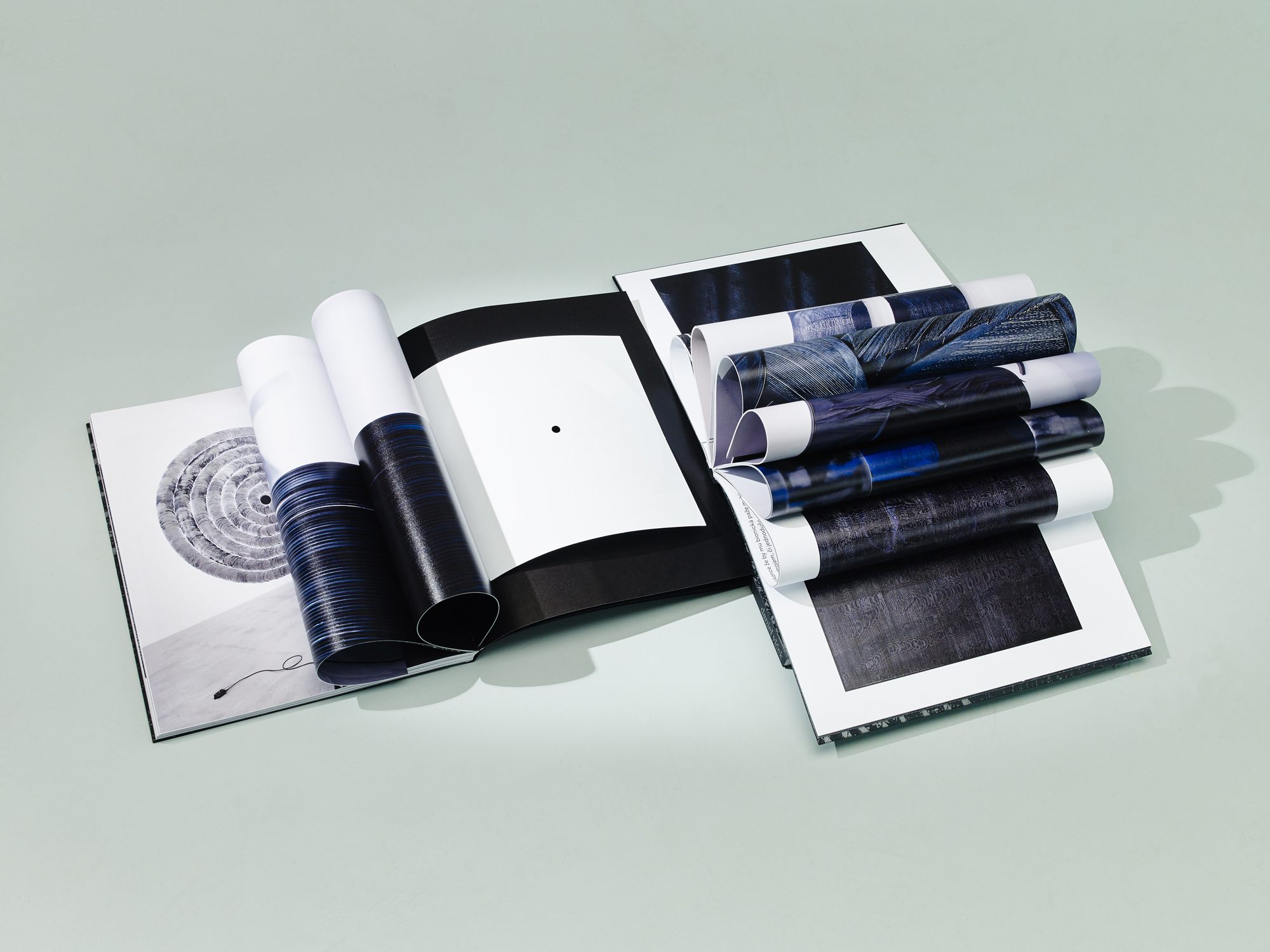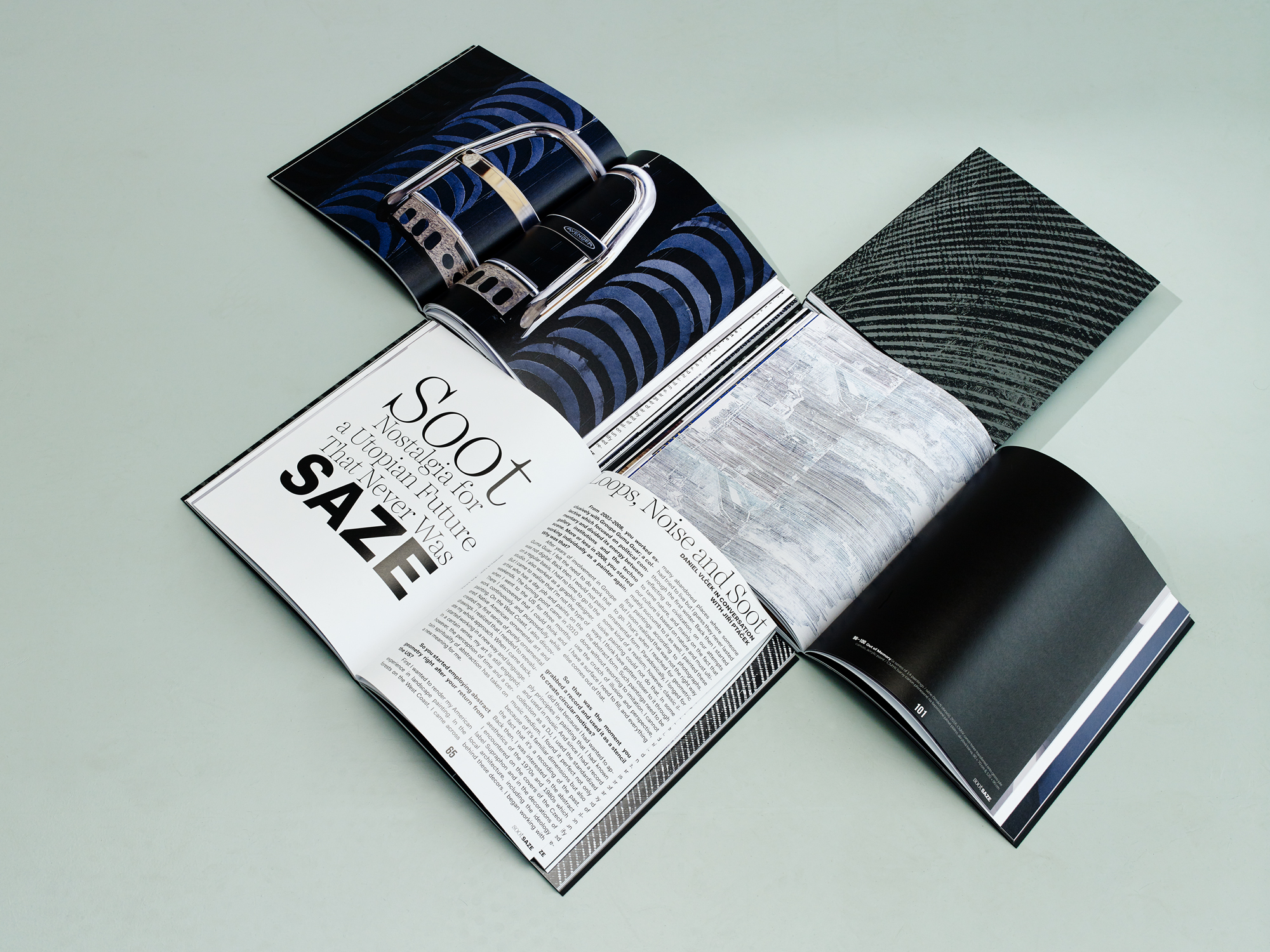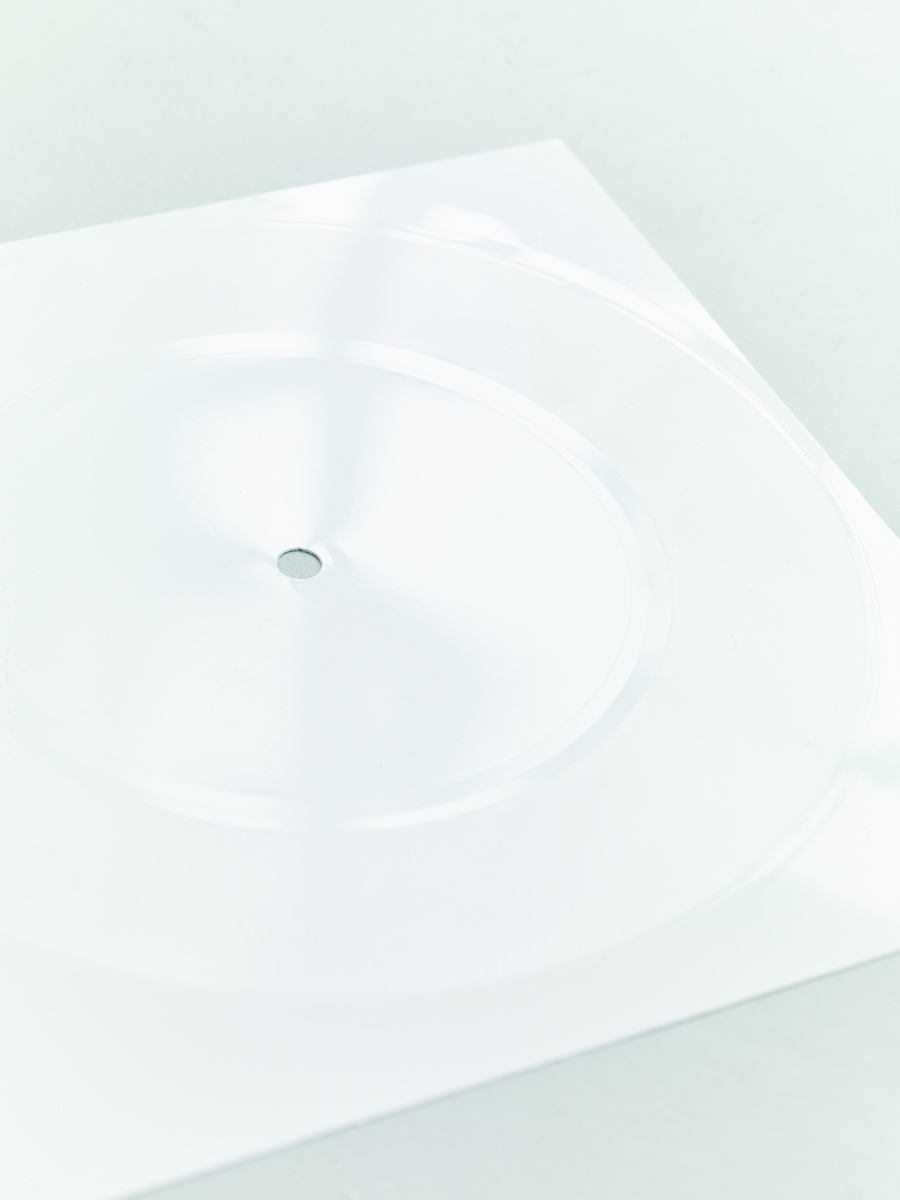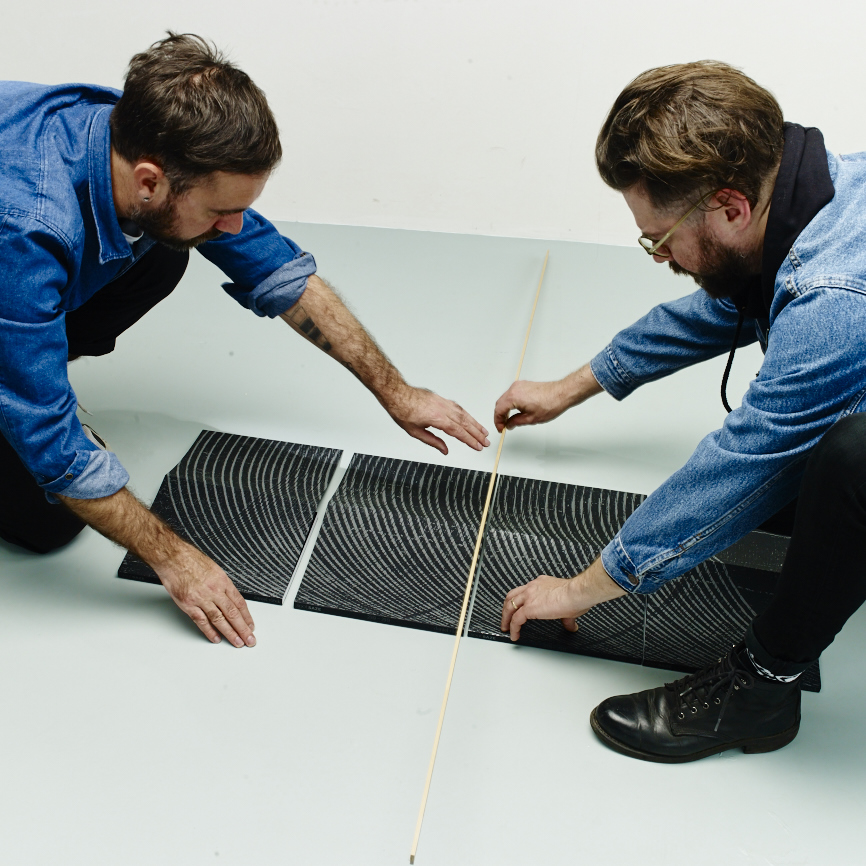“To describe externals, you become a scientist. To describe experience, you become an artist. The old distinction between artists and scientists must vanish.” Timothy Leary: Changing My Mind, Among Others: Lifetime Writings (1982).
When Daniel Vlček first created his “carved” paintings in 2011, one could hardly have anticipated that he would stick to etching the surface layers of paintings using vinyl records as stencils for a whole decade. In early 2019, Vlček can look back at a handsome number of realizations, meaning that his technique, which could be deemed rather peculiar from a certain perspective, has offered enough possibilities to have become a staple; both visually and as a medium of content. First and foremost, Vlček has always employed it to establish a relation between image and sound; both in direct contact with audio installations and as a reference to the characteristics of sound or to the ideological background of music culture. That, however, was not all. Generally speaking, what is typical for Vlček’s body of work is that while it seems to grow out of a single position (at least in the sense of the above mentioned characteristics), it keeps expanding to other positions that may relate to the processual aspects of his specific painting method or to their cultural contexts. In a rather smooth manner, this can go as “far” as commenting on the sphere of industrial production, the “growth of growth” ideology or the penetration of digital technologies into the practical and symbolical grasp of reality while staying in touch with the manual and, in a certain sense, even ritual experience he undergoes during the seemingly mechanical repetition of identical movements.
Daniel Vlček does not stress the contrast and clash between culture and nature, modern and archaic consciousness, the digital and the material, outer reality and inner experience, the impersonalized and authentic or the mechanical and the physical. More or less intuitively, he tends to highlight the links and mutual interconnection of these dichotomies. His best images and installations, however, always have a certain hypnotic quality and elicit a sense of vertigo; in other words, an experience of a descent of factual thinking onto an uncontrollable sensual-psychological level. Let me point out that this is where one can see music and its effect as the strongest source of inspiration.
In any case, the paintings at the Cause and Effect exhibition do not assume a submissive position to music; which is always a potential danger for artists trying to reflect this field by visual means. When the distorted sound of sampled field recordings circulates throughout the gallery, activated by the surface of a painting combining wax, iron dust and magnets, it is not to tackily multiply the visual appeal of the paintings but to constitute their sound parallel. It is linked to the paintings by the character of the sound mass which reaches our ears as “muffled,” as the sound of nature and machines, or as the elementary sound level of civilization for which constant white noise has paradoxically become default silence (which is so heavily present that many of us will experience mental panic when faced by real silence). Similarly, Vlček’s recent paintings, which I would be tempted to call monochromes if their final layer was not penetrated by so many underlying colors, represent noise and unarticulated optical murmur, ungraspable as a form or code while testing the limits of human vision. Vlček’s current painterly outlook is deeply connected with the notion of effects whose causes are not easy to guess, and whose consistency is ephemeral and mysterious, blurred by the interferences of rasters, with a smooth, almost oily surface, simultaneously hiding both background and depth…
We have no decoding tool at hand, nor can we fully trust our senses and ability to objectively grasp the seen and heard. We are only subjected to a certain emergence of audio-visual phantoms that can instantly disappear “like the vanishing effects of a psychedelic drug” (Daniel Vlček). Since Daniel Vlček is never guided merely by the autonomous possibilities of image and sound but also by his notion of the nature of lived reality, his new paintings and installations, too, in their utmost essence, represent the image and sound of its opacity and ephemerality which cannot be entered by means of a rational analysis but rather by having the courage to undertake a certain holistic entrée taking us to unforeseen connections.
Jiří Ptáček

